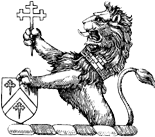
What Does Rome Have to do with Paris?
LETTER FROM ROME
Writing a column from Rome by discussing the relatively new Archbishop of Paris, Cardinal Lustiger, might seem unusual. However, what is happening in the French capital — a cultural revolution connected with Lustiger’s presence — has a deep link with Rome.
Pope John Paul II and Jean-Marie Lustiger have been and are great friends. Their biographies contain many common features: experience as workers in factories and excellent knowledge of modern culture acquired by university studies.
Lustiger belongs to, and is even the leader of, “a new generation of bishops deeply influenced by the Polish Pope,” reported Le Monde,
bishops you can’t classify either as belonging to the right wing or the left wing; neither progressive nor conservative; whose intellectual level is above average and whose way of life is quite different from the traditional one of those prelates who grew up in Action catholique.
The position of these new bishops is a minority one within the French episcopate, but its influence is spreading because it has two important supports: the Pope and the Catholic people. The Parisian Church under Lustiger’s guidance has not only become more “orthodox”; it is moving again. Many lapsed believers are now frequenting churches.
You May Also Enjoy
The bishop must announce to the rich and poor, to the powerful and weak the fullness of truth, which sometimes irritates and offends, even if it always liberates.
One function of the Catholic bishop is to insist upon the doctrinal integrity of the whole of the Church's teaching. Today's bishops have too often forgotten this.
Bishop Crispian Hollis wants to legalize brothels. But, says Bishop Hollis, "that's not to say that I approve of prostitution."

